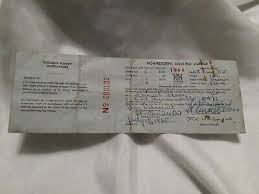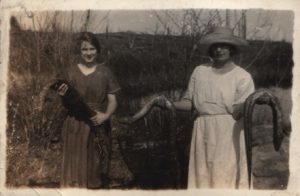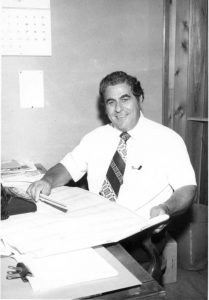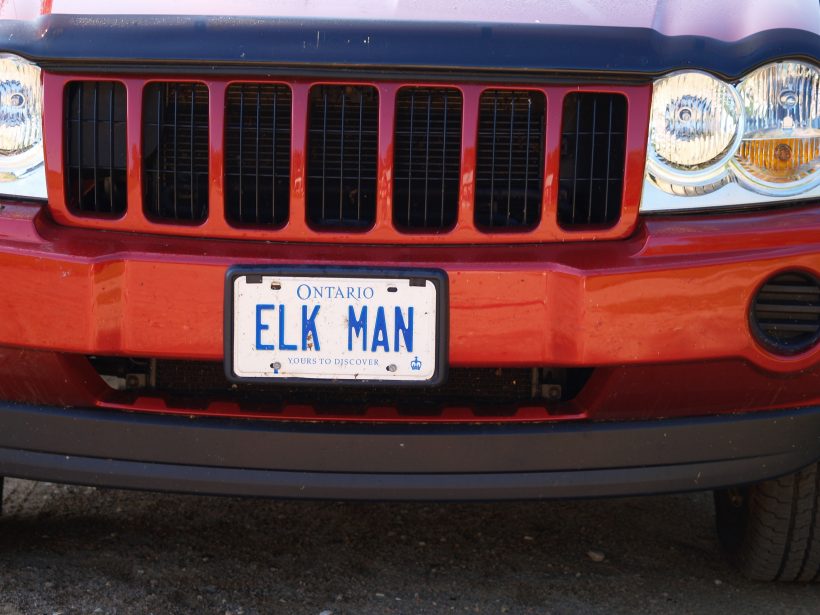ABOUT LICENCES by Ralph Bice
From January 12, 1977
Everyone knows about licenses. So many of them. Most of the ones we think about most are those concerning the outdoors. We must have a licence to trap, a license for each of big game, and an overall license for upland birds and migratory birds, mostly geese and ducks. Then there is the special duck license, a federal idea, and this must be purchased at the post office. We have been told that the money derived from that latest duck license is used to help create better duck breeding and thereby better duck hunting and it is only right that duck hunters pay. However, most of the money spent on improving duck habitat still comes from game clubs in the U.S.A. and most of it is spent by ‘Ducks Unlimited.’
A couple of years back I wrote an article about the program this group was working on in northern Saskatchewan. If the figures given to me were correct several million dollars is spent every year and as I said the money comes from hunting groups. Odd, the numerous clubs that are working hard to stop trapping, hunting and all other activities where game is killed do not supply any cash.
Wildlife officials tell us that if it was not for the work Ducks Unlimited is doing our duck population would be in a very bad plight.

It was the licenses to hunt and fish that I had in mind when I began this column. My first memory of a deer hunting license is of course when I was quite young. Farmers then could get a permit to shoot two deer for their own use. For many families this was their winter’s supply of meat. These permits were free, only the meat had to be used at home. Then for one dollar, later two, you could buy a license which permitted you to take two deer, and these could be sold on the market. This meant quite a help to the settlers as it meant a few dollars that were not too hard to earn. Speaking of selling deer it was in the late twenties when it was discontinued. It was common, even in Toronto, to see deer hanging in front of butcher shops when the season was in. In fact deer would appear on sale the day after the northern season came in, ten days before it was legal in the southern sections.
About 1910 hunters were limited to just one deer, any age, any sex. In 1918 there was a shortage of meat as we had been at war for four years and the cost of the license was increased to three dollars and we were allowed to take two deer. There was a heavy population of deer and some did get their two deer. Next season it was back to one, only they forgot to put the license back to the original price. Shortly the price went to four dollars, then five. Then in the mid-sixties the cost of said license went to ten dollars and let’s hope it will not go higher. What is worthy of note is that when we had many deer the cost of the license was five dollars and when deer got scarce it went up to ten.
A moose license, as long as I can recollect, was five dollars. For people who lived in the province. It is finally up to fifteen though for a couple of seasons in this area it cost twenty five.
In the mid-thirties someone came up with the idea that there should be a license for small game. Cost one dollar. Later two and now three. This perhaps the best buy for a hunting license of any sort.
I do not have the total figures for last fall but it has been stated that well over $15,000,000 is collected in hunting licenses in any season. Non residents pay a much higher fee.
Then there is the fishing license. Years ago residents paid only to fish in provincial parks two dollars. Then it went to three. Some years back it was decided to impose a fish license for all Ontario and no one objected. In fact, I talked to some ladies who had been exempted and they were a bit put out as they felt they should pay as well. For a while one license was all that was required for a family only they could bring out one day’s legal catch, and the kiddies had to be under 19. Then in 1968 they decided to throw Algonquin Park open. Fishermen of any age could bring out a day’s catch. I do know one family of eight, and some of them small, who went into a lake and brought out 24 trout. Those of us who objected were told, and this by people sitting behind a desk in Queen’s Park, that Algonquin Park was such poor fishing it did not matter.

The then Minster Rene Brunelle was invited to come see and we showed him that fishing was good and needed protection but it was of little avail. The lakes in the Park show what a mistake that was.
Then for some unexplained reason it was decided to discontinue the fishing license in Ontario, except for non-residents. Fishing groups felt it was not a wise move and since it was just before election time many thought it was a political dodge. But such a stink was raised that the issue was never mentioned in the election campaign.
So fishermen will get a break. Six months of fishing and go as often as you can get away. And no license.
Then for two weeks of deer season we pay ten dollars and many of us have not had a shot for years. So the hunters pay, and there are many, many more dollars spent on improving fishing than to help hunting. So there is a reason hunters have some gripes.
DID YOU KNOW? By BARNEY MOORHOUSE (2021)
Or, perhaps, do you remember when then Minister of Natural Resources Vincent Kerrio announced on July 31, 1986 that beginning January 1, 1987 most Ontario residents aged 18 to 64 who wished to fish in this province would be obliged to possess a valid Resident Angling License? Only senior citizens, the disabled and Status Indians fishing on their reserve or treaty waters would be exempt.

Anglers could purchase either a $10 annual license or a $5 short-term license that was valid for four consecutive days.
“We expect to generate between $9 million and $10 million a year from the sale of the license,” Kerrio said, “with the money earmarked for a variety of fisheries improvement programs in both northern and southern Ontario.”
As reported in the September 1986 edition of the Angler & Hunter magazine, the official magazine of the Ontario Federation of Anglers and Hunters at that time, “Ontario was among the last of the Canadian provinces to introduce a resident angling license.”
Of course since that time the government has introduced the Outdoors Card (presently $8.57 for Ontario, Canadian and Non-Canadian residents) and increased the fees which can be seen on page 9 of the 2021 Fishing Ontario Recreational Fishing Regulations Summary.
Of interest, the recreational fishing licence revenue, including Ontario resident, Canadian resident and non-resident licence revenue was $36.1 million from January to December 2019 and $26.0 million from January to December 2020. MNRF spokeswoman Jolanta Kowalski explained that as the Ontario licence sales follow a 3-year cyclical pattern of high, medium and low sales as a result of the 3-year licences and Outdoors Cards the 2020 and 2019 years are not comparable. “If comparing to 2017, licence revenue was higher in 2020 for Ontario Resident licences, and lower for both Canadian Resident and Non-Canadian Resident licences,” which may upon reflection be due to the COVID-19 virus crisis.
The value of one Canadian dollar in 1987, 34 years ago, is almost two dollars to-day.
